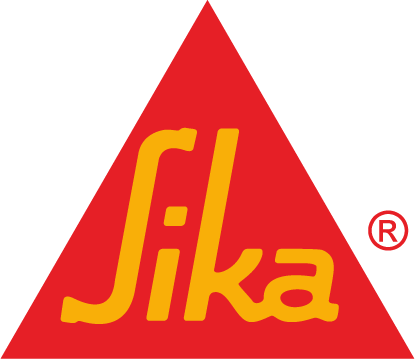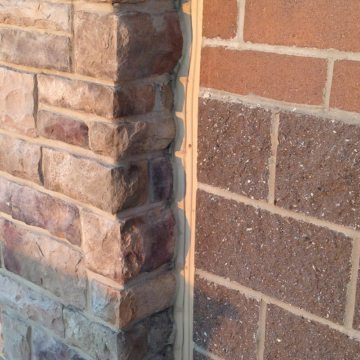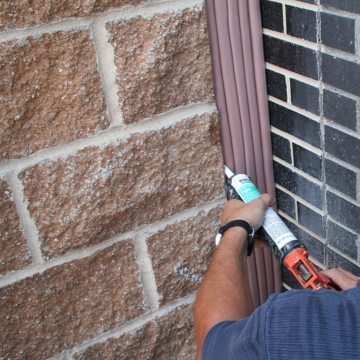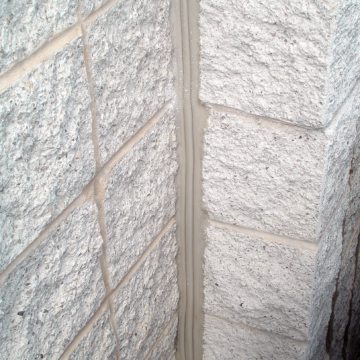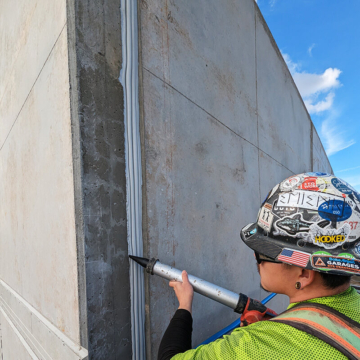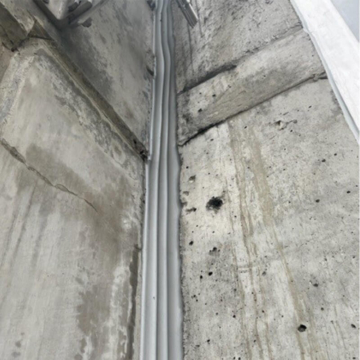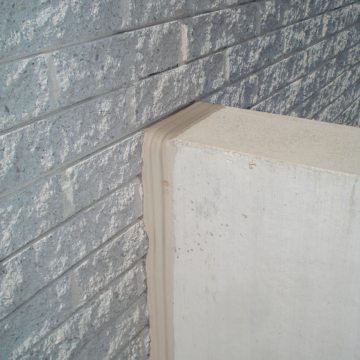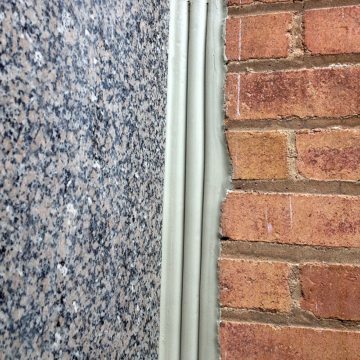Got it Rough? Sealing Rough-Faced Expansion Joint Substrates
Rough expansion joint substrates are actually very common. We were contacted recently about rough limestone and its suitability as a substrate for an expansion joint.
It’s a great question because so many of the old technologies — compression seal, strip seal, closed-cell foam — would have left this building leaking. Seismic Colorseal, our industry-defining hybrid sealant, on the other hand is ideally suited to sealing rough substrates. Why?
First of all, it’s always in compression. We make Seismic Colorseal from more foam than the size of the opening. In fact we use more foam than even the widest expected opening of the joint. Next, the impregnated foam backing is pliant. Under the backpressure of compression it conforms to the irregularities of the rough substrate.
And, the contractor shoots a corner bead of silicone between the substrate and the outermost precured silicone bellows on the face of the Seismic Colorseal. This locks the system to substrates and seals off even any pin holes not filled by the foam.
When complete, the corner bead of silicone (and the whole system for that matter) is never in tension.https://www.emseal.com/product/seismic-colorseal-wall-expansion-joint/
Tension is the number one killer of liquid sealant (caulk and backer rod) systems. Tension on the bond line is also the undoing of any system that is glued in and relies on adhesion in tension for its performance and waterproofing.
Finally, Seismic Colorseal features non-invasive anchoring. This means no drilling and screwing into your substrates. Nothing puts substrates at risk for spalling and cracking more effectively than drilling a hole and driving a masonry screw into it — heck, that’s the way they split natural stone in quarries. And at inside corners, it’s impossible to drill those angled anchor holes required of strip seals.
How rough is too rough? This is situational, but as a rule of thumb, if the irregularities are abrupt — like with sharp right angles or near right angles as you may get on split-faced block — then that will probably be too rough and will need some remedial attention.
To reduce the amplitude and sharpness of the roughness two methods are usually effective. The first is grinding or cutting. Grinding or cutting can be used to soften the severity of the angles of the roughness and reduce the distance from the peaks to the valleys. The next is parging. Parging is the packing or filling of the valleys with a suitable patching material to smooth things out.
It is the rare occasion that either of these methods is needed to make a rough substrate suitable for Seismic Colorseal.
Still not sure? As with our online chat inquirer, send our Tech Team a photo of your condition and we’ll help you decide.
Here are some more pictures of rough substrate conditions that have been effectively sealed using Seismic Colorseal.
Tilt-Up Concrete Wall Expansion Joint Substrate Irregularities Need Sealing
Sawtooth Caulking Inc.‘s Team expertly seals a concrete expansion joint in tilt-up construction – Even in new construction, joint substrate irregularities are an often occurrence, and require a precompressed open-cell foam sealant like Seismic Colorseal that can expand to fill the voids of rough substrates.
Concrete Expansion Joint Substrates Aren't Always Perfect, But That Doesn't Mean Your Seal Doesn't Have To Be
Waterproofing concrete expansion joint corner wall conditions with Seismic Colorseal is easily accomplished even with rough substrates – Installation of an inside corner would be nearly impossible with rubber-and-rail strip-seal systems. Navigating a drill into position to make a pilot hole to secure the rails is not possible in these types of joint conditions (except in really wide joints). The rough substrate is also not conducive to installation of the rigid metal rails of the strip-seal. The precompressed foam sealant conforms to these irregularities and is watertight and thermally insulates.

